
The Victorian Artists Society, which can trace its establishment to 1856 in Melbourne, promotes artistic education, art classes and gallery hire exhibition in Australia. It was formed in March 1888 when the Victorian Academy of Arts and the Australian Artists' Association amalgamated.
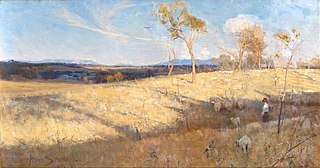
The Heidelberg School was an Australian art movement of the late 19th century. It has been described as Australian impressionism.
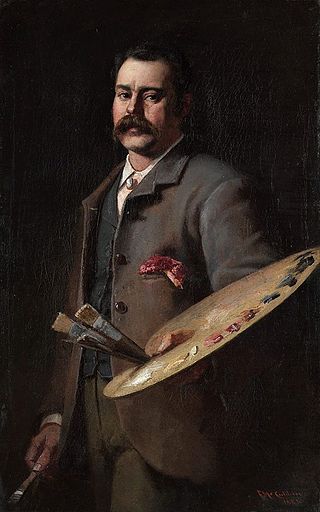
Frederick McCubbin was an Australian artist, art teacher and prominent member of the Heidelberg School art movement, also known as Australian impressionism.
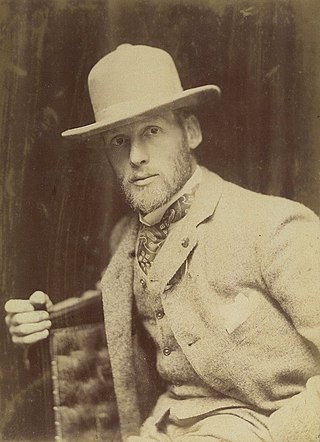
Thomas William Roberts was an English-born Australian artist and a key member of the Heidelberg School art movement, also known as Australian impressionism.
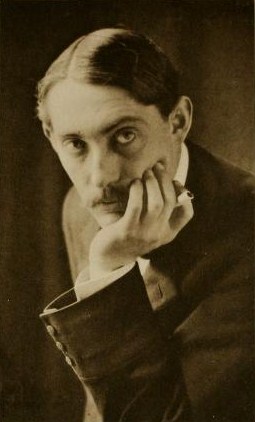
Charles Edward Conder was an English-born painter, lithographer and designer. He emigrated to Australia and was a key figure in the Heidelberg School, arguably the beginning of a distinctively Australian tradition in Western art.

Sir Arthur Ernest Streeton was an Australian landscape painter and a leading member of the Heidelberg School, also known as Australian Impressionism.
Elizabeth Ann Dewar Churcher was an Australian arts administrator, best known as director of the National Gallery of Australia from 1990 to 1997. She was also a painter in her own right earlier in her life.

John Peter Russell was an Australian impressionist painter.
The following lists events that happened during 1859 in Australia.
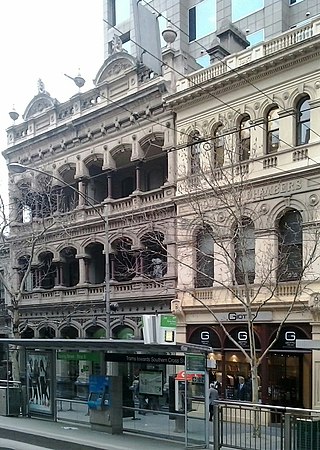
Grosvenor Chambers, at number 9 Collins Street, Melbourne, contained the first custom-built complex of artists' studios in Australia. The construction costs were almost £6,000 and the building opened in April 1888. The owner was Charles Stewart Paterson (1843-1917). He, in partnership with his brother James, had a high-end decorating business in Melbourne. Another brother was the painter John Ford Paterson who sometimes exhibited with the Heidelberg School artists.
The National Gallery of Victoria Art School, associated with the National Gallery of Victoria, was a private fine arts college founded in 1867 and was Australia's leading art school of 50 years.

Alethea Mary Proctor was an Australian painter, print maker, designer and teacher who upheld the ideas of 'taste' and 'style'.

Artists' camps flourished around Sydney Harbour in the 1880s and 1890s, mainly in the Mosman area making it "Australia's most painted suburb", but died out after the first decade of the twentieth century. They developed as a result of the enthusiasm for painting en plein air fostered by the Barbizon and Impressionist movements in France in the second half of the 19th century, and were modelled on the artists' colonies which grew up in France and parts of the British Isles. In them, free-spirited young men gathered to live cheaply together in the open air, trying to capture the beauty of their surroundings in paintings and drawings. Financial stringency during the depression of the 1890s made life in the camps even more attractive for Australian artists trying to establish themselves in a difficult market.

The 9 by 5 Impression Exhibition was an art exhibition in Melbourne, Australia. It opened on 17 August 1889 at Buxton's Rooms on Swanston Street and featured 183 works, the majority of which were painted by Charles Conder, Tom Roberts and Arthur Streeton of the Heidelberg School art movement, also known as Australian impressionism. The exhibition's name references the dimensions of most of the paintings—9 by 5 inches, the size of the cigar box lids upon which many of the works were painted—as well as the impressionist techniques employed by the artists.

Seine (paintings) is the subject and location of paintings that Vincent van Gogh made in 1887. The Seine has been an integral part of Parisian life for centuries for commerce, travel and entertainment. Here van Gogh primarily captures the respite and relief from city life found in nature.

Polly Hurry, was an Australian painter. She was a founding member of the Australian Tonalist movement and part of the Twenty Melbourne Painters Society.

Leon Pole was an Australian artist who was associated with the Heidelberg School art movement, also known as Australian Impressionism.

The Australian pavilion houses Australia's national representation during the Venice Biennale arts festivals.

John Llewellyn Jones was an Australian artist and photographer who was associated with the Heidelberg School art movement, also known as Australian impressionism.
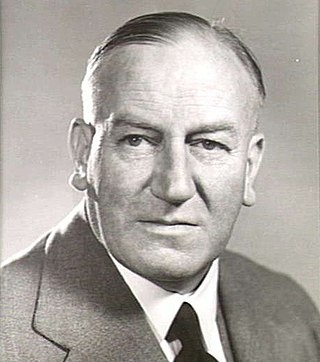
Harold Brocklebank Herbert (1891–1945) was an early 20th century Australian painter and printmaker, an illustrator and cartoonist. A traditionalist, as an art teacher he promoted representational painting, and as a critic was an influential detractor of modernism. He was the first war artist to be appointed for Australia in the Second World War, serving for 6 months with the Australian Infantry Forces in Egypt in 1941 and in the Middle East in 1942.
















